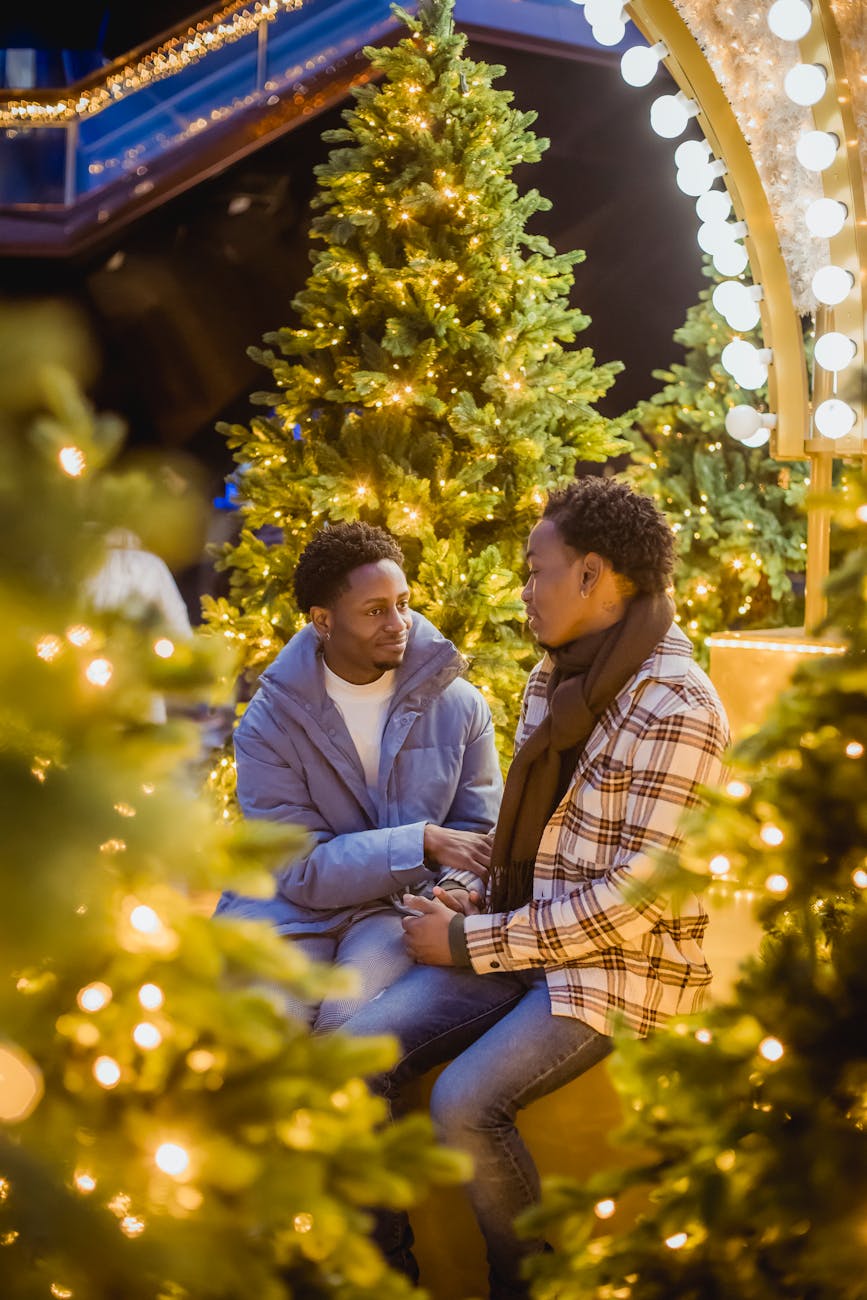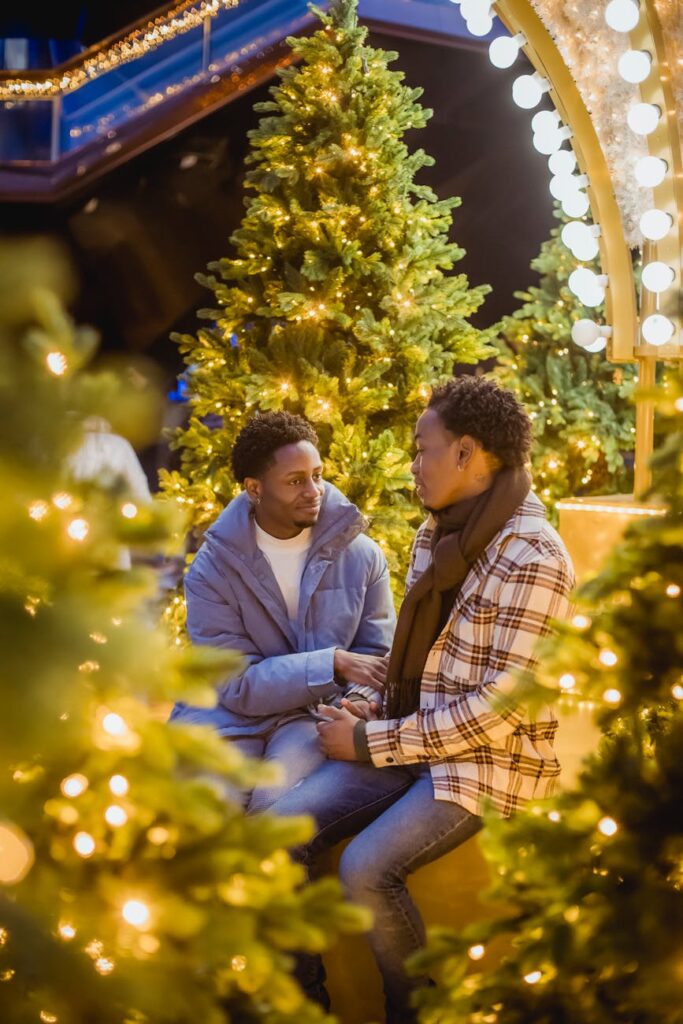
Introduction
7 beloved Christmas traditions in America and their origins :Christmas in America is a tapestry woven from a rich blend of cultures, histories, and customs, resulting in 7 beloved Christmas traditions in America and their origins that resonate deeply with people across the nation. Each tradition carries its unique story, reflecting the diverse backgrounds of American society. The Christmas tree, a symbol of eternal life, has roots in ancient pagan rituals, later adopted by Christians in Germany before making its way to American homes in the 19th century.
1. The Christmas Tree
History of the Christmas Tree in America
The Christmas tree has become an iconic symbol of the holiday season in America, with a rich history that reflects the blending of various cultural traditions. The practice of decorating evergreen trees during winter celebrations dates back to ancient times, but it was not until the 19th century that the Christmas tree gained widespread popularity in the United States.
Cultural Significance and Variations
Culturally, the Christmas tree represents joy, hope, and the spirit of giving. Families often gather around the tree to celebrate, exchange gifts, and create lasting memories. Over the years, variations of the Christmas tree tradition have emerged, influenced by different cultural backgrounds.
Modern Practices and Decorations
Many families now opt for themed trees, incorporating colors and motifs that reflect their unique style. The use of LED lights has also transformed tree decorating, offering a wider array of colors and energy efficiency. Additionally, the popularity of artificial trees has grown, providing a convenient and reusable option for many households.
2. Christmas Stockings
Origins of Hanging Stockings
The origins of hanging stockings can be traced back to European customs, particularly in the Netherlands and England. It is believed that children would hang their stockings by the fireplace, hoping to receive gifts or treats from St. Nicholas, a figure who later evolved into the modern-day Santa Claus.
The Legend of St. Nicholas
The legend of St. Nicholas plays a pivotal role in the tradition of Christmas stockings. St. Nicholas, a 4th-century bishop known for his generosity, is said to have secretly delivered gifts to those in need. One popular story recounts how he dropped gold coins down the chimney of a poor family, which landed in the stockings that had been hung by the fire to dry.
Contemporary Stocking Traditions
Contemporary stocking traditions have evolved significantly over the years. Today, families often hang personalized stockings, each adorned with names and decorations that reflect individual personalities. The contents of these stockings can range from small toys and candy to practical items like socks and toiletries.
3. Caroling
Evolution of Christmas Carols
As Christmas carols began to take shape, they transformed from simple folk songs into more structured musical compositions. By the 19th century, the tradition of Christmas caroling became firmly established in America, influenced by European customs and the burgeoning popularity of printed music.
Caroling in Modern Times
In modern times, caroling has evolved to encompass a variety of styles and settings. While traditional door-to-door singing remains a cherished activity, many communities now organize larger events, such as caroling festivals and concerts, where choirs and groups perform in public spaces. This shift not only fosters a sense of community but also allows for a greater appreciation of the musical artistry involved in these timeless songs.
4. Santa Claus
The Transformation of St. Nicholas
The figure of Santa Claus is a central element among the 7 beloved Christmas traditions in America and their origins, embodying the spirit of giving and joy during the holiday season. The transformation of St. Nicholas, a 4th-century Greek bishop known for his generosity, laid the groundwork for the modern Santa Claus. St. Nicholas became a symbol of kindness and charity, particularly known for secretly delivering gifts to those in need.
The Americanization of Santa Claus
The Americanization of Santa Claus took place in the 19th century, driven by literature and illustrations that popularized his image. The publication of “A Visit from St. Nicholas,” commonly known as “The Night Before Christmas,” in 1823 played a pivotal role in shaping Santa’s character. This poem introduced many iconic elements, such as his jolly demeanor, the sleigh pulled by reindeer, and the tradition of visiting homes on Christmas Eve.
Santa’s Role in Christmas Celebrations
Santa’s role in Christmas celebrations has evolved into a beloved tradition that emphasizes the joy of giving. He is often depicted as the ultimate gift-bringer, with children eagerly awaiting his arrival and the presents he leaves behind. This anticipation fosters a sense of excitement and wonder, making Santa a cherished symbol of the holiday. Families incorporate Santa Claus into their festivities, from hanging stockings to visiting Santa at shopping malls, reinforcing the spirit of generosity and community that defines the Christmas season in America. As a result, Santa Claus remains an enduring figure, encapsulating the magic and warmth of Christmas for generations.
5. Christmas Dinner
Traditional Holiday Foods
Christmas dinner stands as one of the most cherished aspects of the holiday season, embodying the spirit of togetherness and celebration. Across the United States, traditional holiday foods vary, reflecting a rich tapestry of cultural influences. While turkey and ham often take center stage, regional specialties add unique flavors to the festive table.
The Importance of Family Gatherings
This meal acts as a focal point for families to come together, share stories, and create lasting memories. In many households, the preparation of the Christmas feast becomes a communal activity, with family members collaborating in the kitchen, passing down recipes and traditions from one generation to the next. The act of sharing a meal fosters connection and reinforces familial bonds, making Christmas dinner a vital tradition that transcends mere sustenance.
6. Gift Giving
Historical Context of Gift Giving
Gift giving during Christmas is one of the most cherished customs among the 7 beloved Christmas traditions in America and their origins. Historically, this practice can be traced back to the gifts presented by the Magi to the infant Jesus, symbolizing love and generosity. Over time, this act evolved, influenced by various cultures and religious practices.
The Influence of Commercialization
As the nation grew, so did the tradition. The influence of commercialization in the 19th century transformed Christmas into a more consumer-oriented holiday. The publication of Charles Dickens’ “A Christmas Carol” in 1843 played a pivotal role in reshaping public sentiment towards Christmas, emphasizing generosity and kindness.
Modern Gift-Giving Practices
In modern times, gift-giving practices have become more varied and personalized. While many still adhere to the tradition of exchanging presents on Christmas Day, the types of gifts have expanded dramatically, reflecting individual tastes and preferences. From handmade items to high-tech gadgets, the emphasis is often on thoughtfulness rather than monetary value.
7. Advent Calendars
Origins of Advent Calendars
Initially, these calendars were simple chalk marks on doors or the burning of candles to count down the days until Christmas. The first printed Advent calendar appeared in 1902, created by a German publisher, which incorporated images and messages that celebrated the anticipation of Christmas. This tradition gradually gained popularity, spreading across Europe and eventually making its way to the United States.
Creative Variations of Advent Calendars
Creative variations of Advent calendars have emerged, showcasing the ingenuity of American culture. Beyond traditional chocolate-filled calendars, modern interpretations include beauty products, toys, and even activities that families can do together, such as baking or volunteering.This adaptability has made Advent calendars a versatile tradition, allowing families to customize their experiences and create lasting memories.
Conclusion
Reflecting on Traditions
Each tradition, whether it be decorating the Christmas tree or exchanging gifts, carries with it a story that connects generations. This reflection highlights the importance of heritage, reminding us that our celebrations are rooted in history and shared experiences.
The Importance of Heritage
As we engage in holiday festivities, we not only honor the past but also create lasting memories for future generations.
Looking Forward to Future Celebrations
Looking forward to future celebrations, it is essential to embrace the evolving nature of these traditions. As society changes, so too can our interpretations and practices, allowing us to infuse new meaning into age-old customs. By blending the old with the new, we ensure that the spirit of Christmas remains vibrant and relevant.
If you’re eager to learn more, be sure to check out these sources:
Source 1: Matilda Chocolate Cake: The Legendary Dessert You Need to Try
Source 2: History of Christmas Trees – History.com
